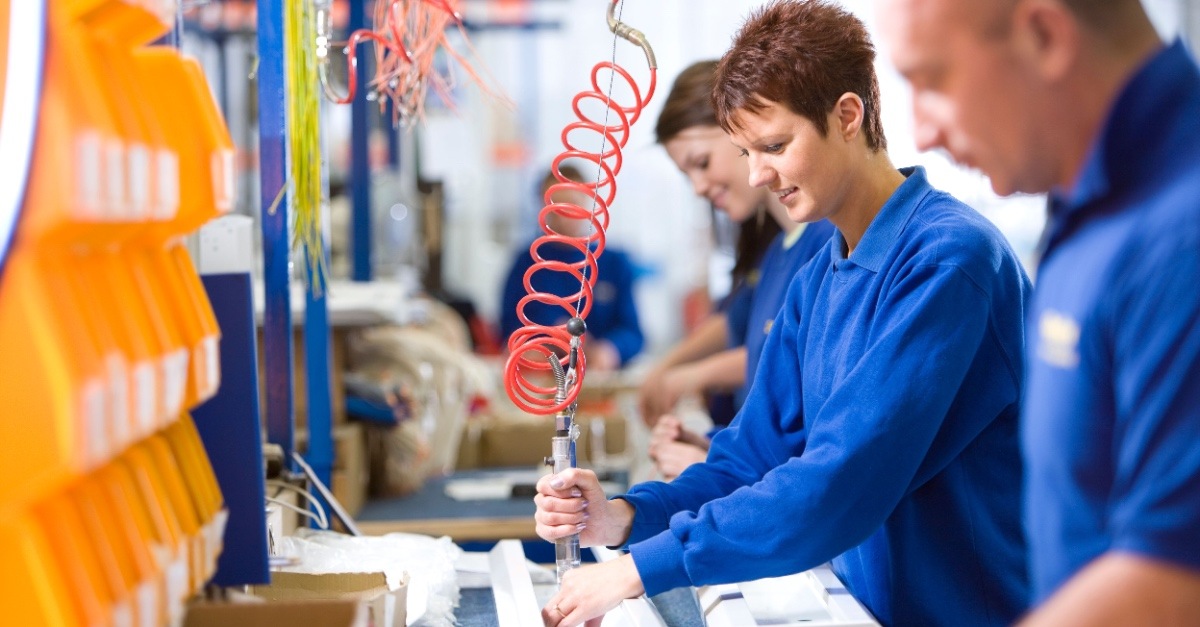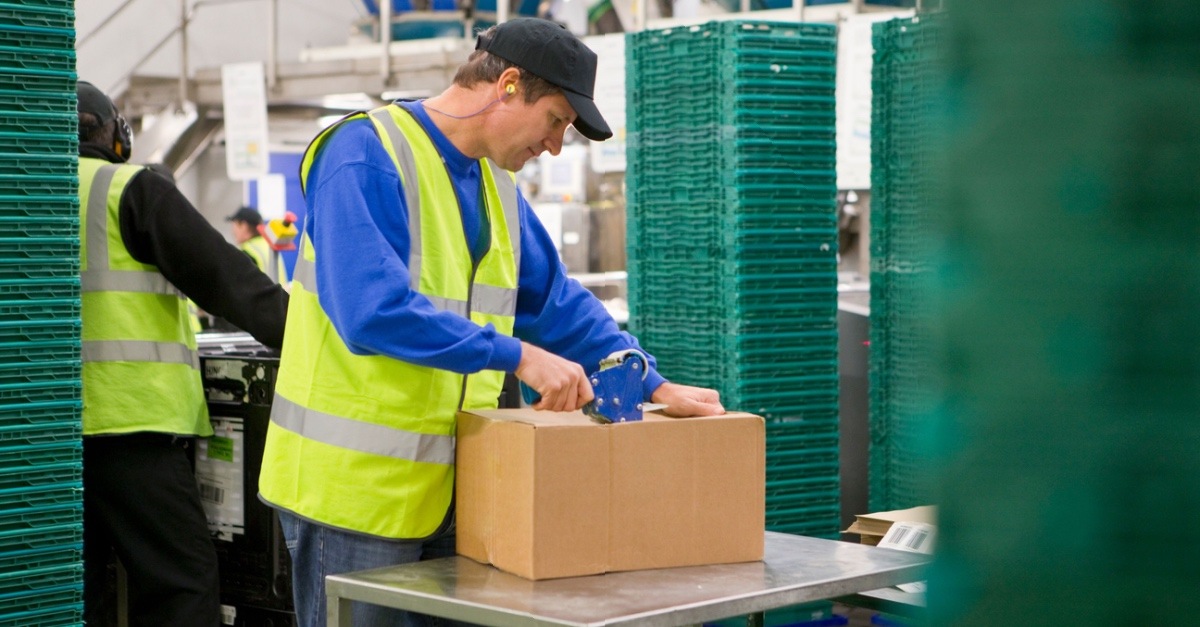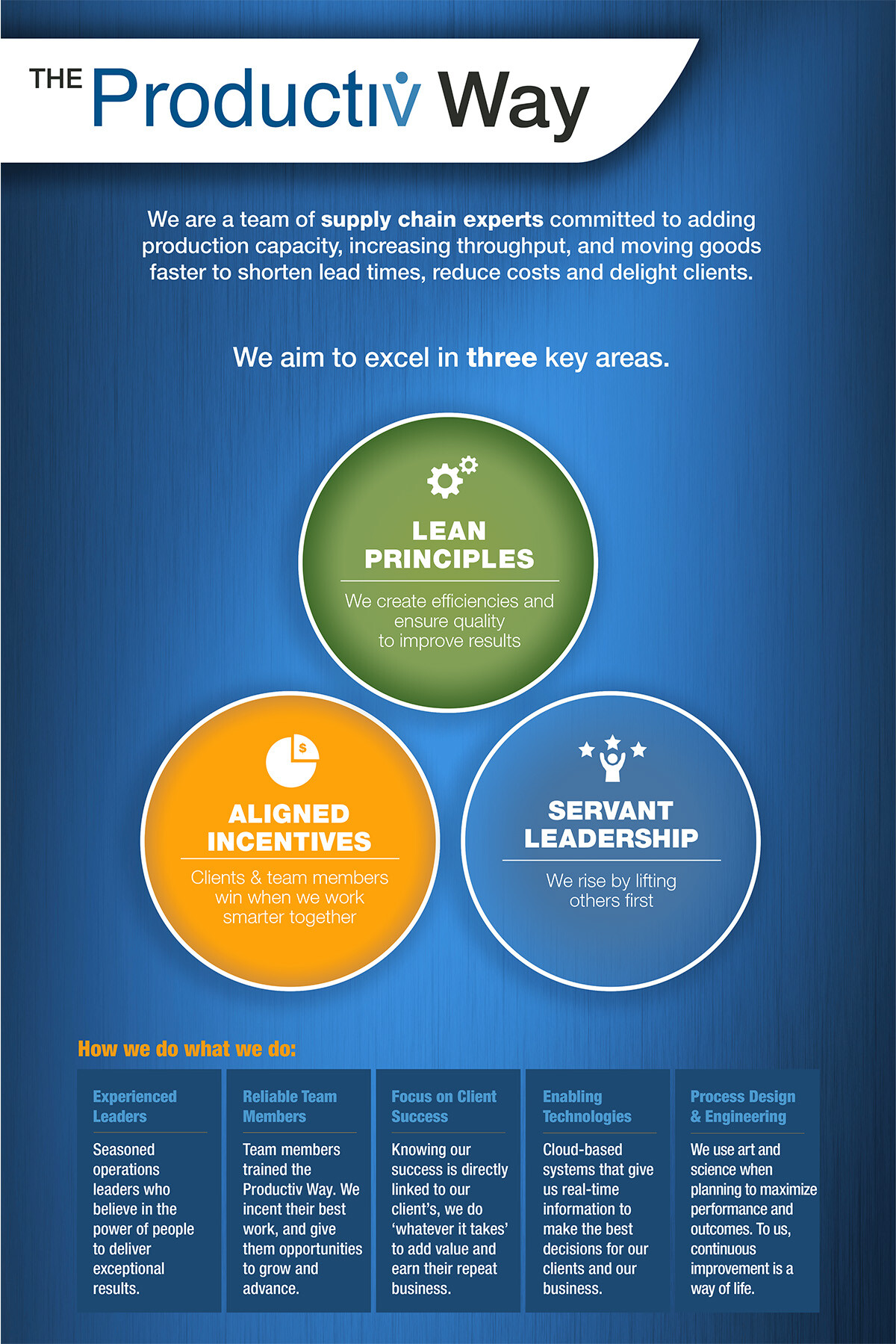6 min read
Changing Tides: Kitting and Assembly Services in the Modern Supply Chain
Kitting and assembly services are in high demand, as more and more businesses need to find ways to package components into new products for both...
5 min read
Productiv : July 19, 2024

As supply chains are becoming increasingly complex, the demand for efficiency and flexibility has never been higher as companies strive to meet rising customer expectations and navigate global disruptions. To address these challenges, many businesses are turning to innovative strategies, including kitting and assembly services. Connecting with an experienced kitting company helps improve inventory management and increases your ability to adapt to change in a volatile market.
The modern supply chain is a sophisticated network taking in procurement and sourcing, manufacturing, warehousing and distribution, and logistics and transportation. Each component plays a crucial role in ensuring that products move smoothly from raw materials to end customers, both B2C and B2B.
This kind of intricate network faces numerous challenges. Managing multiple global suppliers, manufacturers, and distribution channels creates increased complexity. Rising customer expectations add pressure to deliver faster, with greater accuracy — all while providing a greater degree of personalization.
Globalization introduces additional layers of complexity, with international trade regulations and tariffs, plus growing disruptions from weather-related events and geopolitical turmoil. Cost management is a constant struggle as companies strive to balance efficiency with service level while keeping operational expenses in check.
Overstocks and stockouts are common problems. Excess inventory ties up capital and increases storage costs, while stockouts lead to missed sales and unhappy (or even former) customers. Poor use of warehouse space due to poor organization also results in higher operational costs due to inefficiency.
Many smaller companies still rely on manual processes, which are prone to errors and slow down operations. A decrease in order fill rates leads to customer dissatisfaction and lost sales. Customization and flexibility issues also plague many businesses. Meeting personalized customer demands can be difficult, and the limited ability to adapt to market changes hinders growth and competitiveness.
Kitting solution providers can help you address many of these supply chain challenges. They can tailor an engineered process to meet your specific needs, including pre-assembled kits, custom kits, and integration of kitting into the assembly line.
Some common types of kitting and assembly include subscription boxes, kitting for retail store displays and promotional campaigns, bundling of medical and surgical kits, sampling (cosmetics, foods, toys, home décor, etc.), and relabeling/repackaging kits for different retailers with different requirements.
Pre-assembled kits are ready for immediate use, simplifying inventory management and reducing the need for warehouse storage. Custom kits allow for greater flexibility, enabling companies to meet specific customer requirements such as product personalization. Assembly line integration incorporates kitting and assembly processes directly into manufacturing, increasing efficiency and reducing the need for separate handling stages.
Improved inventory management is one significant benefit of a kitting solution. By consolidating items into kits, businesses can optimize storage, reduce inventory levels, and optimize stock handling. This streamlined approach reduces the risk of overstocking and stockouts, ensuring products are available when needed.
Enhanced operational efficiency is another key advantage. Automating kitting and assembly processes reduces your reliance on manual labor, minimizing errors and increasing throughput and scalability. This leads to faster order fulfillment and delivery. A streamlined process also reduces labor costs.
You can also create custom kits tailored to specific customer needs. This kind of flexibility is vital in today’s market, where customer demands change rapidly. Kitting and assembly also enables you to provide value-added services such as packaging and labeling. Product appeal is enhanced, making for a better customer experience.
Another positive aspect is the ability to lower production costs by reducing or even eliminating import tariffs. This could include, for example, ordering component parts from China and assembling them into finished goods here. But the specifics depend on several factors, including the nature of the components and the finished product, as well as U.S. trade regulations. Here, the expertise of a customs broker comes in handy.
Companies can also de-risk their supply chain by opting to do kitting and assembly here. For example, if you source finished goods from Asia, you’re completely dependent on that supplier. Sourcing the components for assembly in the U.S. opens up a world of possibilities in terms of supply chain efficiency through things like bulk ordering and maximizing container space to lower unit costs. But it also makes sourcing more complex, with multiple suppliers of each component.
This is where a logistics expert such as a 3PL with experience in kitting and assembly across industries can advise you on what makes sense for your business and help you refine your supply chain strategy.
These extend way beyond solving immediate supply chain problems. Kitting solutions provide significant cost savings by lowering labor costs and reducing waste and rework. Bulk production and assembly drive economies of scale, lowering the key metric of cost per unit (CPU). The use of standardized processes such as lean and Six Sigma ensures consistent product quality, foundational for maintaining trust and satisfaction.
Customer satisfaction is another important benefit of kitting and assembly services. Faster, more accurate deliveries mean happier customers, while high-quality products and reliable service enhance the overall customer experience. This translates into increased brand loyalty, as customers are more likely to return when you can consistently meet (or exceed) their expectations.
Successful implementation of a kitting solution requires careful planning, and choosing the right provider is crucial. Businesses should evaluate potential kitting companies based on experience, capabilities, and reputation. It’s important to consider whether they can handle specific product requirements and volumes. Conducting thorough assessments and requesting references helps ensure reliability and quality.
Integration with existing systems is another critical factor. Make sure the provider’s systems are compatible with your operations and technology. Data integration is necessary to avoid disruptions and ensure efficient synchronization, including inventory and order management.
A continuous improvement program, regular performance reviews, and effective communication are key factors for long-term success. Regular review of kitting and assembly processes helps maintain efficiency and quality, and frequent performance assessments identify areas for improvement. Open, transparent communication with your partner helps ensure that issues are identified and addressed promptly.
In a table-build scenario using a batch process for kitting and assembly, boxes are pre-built, and components are stacked on a table. Each associate assembles a kit, seals up the box, and puts it on a pallet. A quality control inspector randomly picks out boxes throughout the production run, checking to make sure all components are included.
Unfortunately, the batch process is prone to error. For example, only one set of eyes is on each box. An associate could start assembling a kit with seven out of eight components when they inadvertently ran out of one. This would never be caught before delivery unless the QC inspector randomly picks out the shorted box. In this scenario, the retail client receives kits with missing or duplicate components, which is not good. The only fix is to rework the job by taking the entire lot back and visually inspecting each one.
Therefore, a process is needed to remove this quality risk. Using single-piece flow (SPF), items move along a conveyor belt, with each component added by associates at individual stations. Now, quality happens in line as the boxes are assembled, not separately from the production process. The latter costs money and takes up labor and floor space.
By the end of the process, each associate has performed their task only after the preceding person had done theirs. Also, when items are put in the same location, it becomes a visual indicator of what the completed kit should look like, and where each component fits, for everyone on the assembly line. In this way, each associate becomes a quality inspector.
Today’s supply chains are complex networks requiring innovative solutions. Kitting and assembly services is one way to address common supply chain problems, while improving efficiency and enabling greater personalization. Embracing kitting and assembly is not just a solution to immediate challenges, but a strategic move towards long-term success in an evolving global market.
By choosing the right provider and implementing a rigorous continuous improvement program, businesses can achieve significant benefits: cost savings, improved product quality, and greater customer satisfaction.
With demand growing across industries for kitting and assembly solutions, companies are looking for qualified partners to help them set up an efficient, quality process to save on rising supply chain costs.
Productiv, a leading 3PL with deep experience in kitting solutions across industries, combines lean principles, the latest technology, and a deep talent bench. Companies are empowered to set up a highly efficient kitting process, driving throughput without compromising on quality. And the results speak for themselves.
Productiv’s comprehensive turnkey services, scalability, and cost-per-unit pricing are the perfect combination of efficiency and performance. Productiv consistently exceeds expectations on a wide variety of kitting and assembly applications, specializing in difficult, time-sensitive assignments. To learn more about the Productiv difference, talk to an expert today.
Get ideas on how to delight your customers with delivery on their timeline.

6 min read
Kitting and assembly services are in high demand, as more and more businesses need to find ways to package components into new products for both...

9 min read
Managing product assembly and kitting in-house quickly bottlenecks growing businesses. You face limited warehouse space, workers spend hours bundling...

1 min read
Almost every successful company has a ‘way’ – an informal or formal set of cultural or operational principles that makes them unique. Toyota has one...